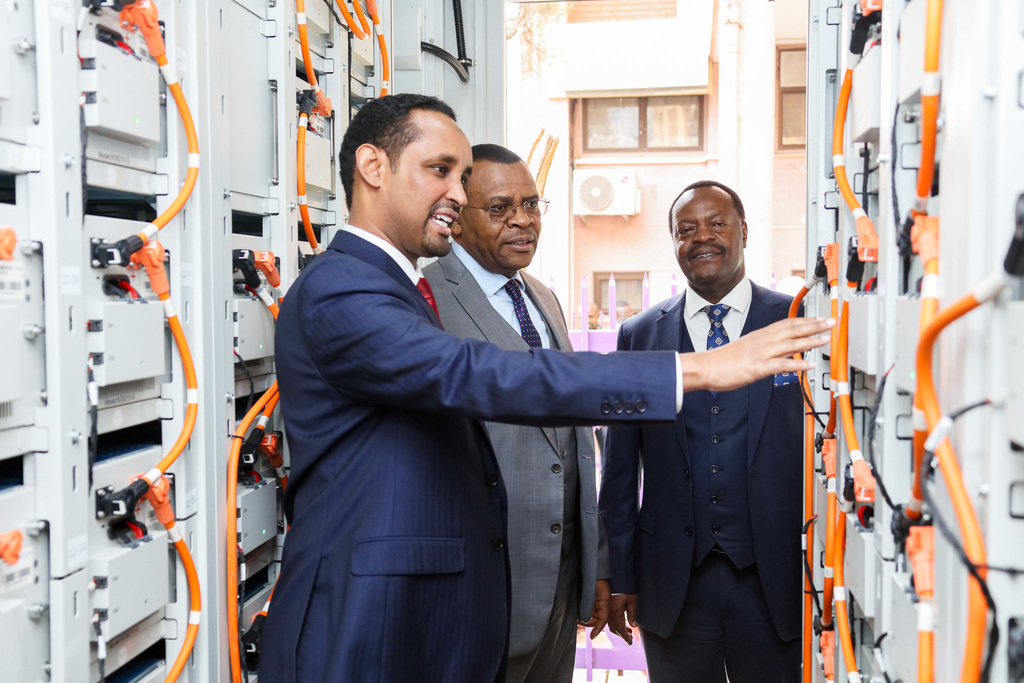

The Kenya Electricity
Generating Company is piloting use of a Battery
Energy Storage System for uninterrupted renewable power, marking a
new frontier in Kenya’s green energy strategy.
On Tuesday, Kengen announced the installation of a 1.16 megawatt-hour (MWh) BESS to serve the company’s 52- 52-kilowatt Modular Data Center (MDC) at its head offices in Nairobi, a facility comprising 356 U-spaces, purpose-built to support the firm’s growing digital infrastructure.
The storage system is
designed to guarantee stable electricity even during periods of low grid
demand, underscoring the role of battery technology in enhancing energy
resilience.
The initiative is part of the company’s Good to Great (G2G) 2034 strategic blueprint, which targets the rollout of 500MWh of energy storage capacity over the next decade.
The country is in need of said energy storage facilities to enable the national electricity grid to cope with an increase in power plants that use energy sources such as wind and solar, which are not available in the evenings when there is a surge in power consumption.
The battery will store excess energy from its geothermal power plants in Olkaria to be used when demand goes up.
“This commissioning marks a crucial step in our journey toward a low-carbon, digitally resilient future,” said Peter Njenga, KenGen’s managing Director and CEO.
“By integrating battery storage into our data infrastructure, we are not only reducing our carbon footprint but also showcasing how energy utilities can lead in sustainable innovation.”
KenGen emphasized that the BESS offers multiple advantages, including improved grid stability, energy independence, cost efficiencies, and seamless backup capabilities.
“This initiative is more than a technological upgrade. It is a commitment to Kenya’s green transition and to ensuring that our digital economy is powered by sustainable, reliable energy.”
While Kenya has significantly increased its installed capacity, it has also resulted in a paradox — excess capacity that has seen the country suffer financial losses.
Kenya's current installed (grid-connected) electricity capacity is 2,651 MW, with peak demand of 1,912 MW. Demand rises at an average rate of 3.6 per cent annually.
The high generation means that at least 700MW goes to waste, with power users forced to shoulder the burden.
In June, Energy cabinet secretary Opiyo Wandayi revealed that Kenya Power spent a total of Sh151.7 billion in the 2023/24 financial year, including billions paid for electricity that was generated but not used—costs he said were necessary to maintain backup capacity and ensure a stable power supply.
Additionally, the country experiences approximately 16 per cent system loss of generated power due to aging transmission and distribution networks.
To address this, Kenya Electricity Transmission Company (Ketraco), in its 2023-2042 Transmission Master Plan, includes the construction of 6,510 kilometers of transmission lines and 18,866 megavolt-amperes of transformation capacity.
This will also help prepare the grid to meet projected growth in electricity demand from 12,985 gigawatt hours (GWh) in 2022 to 36,291 GWh by 2042.
The government estimates this build-out will require investments of $4.8 billion (Sh620.6 billion), of which only $987 million had been secured by the end of May 2023 when the master plan was published.












